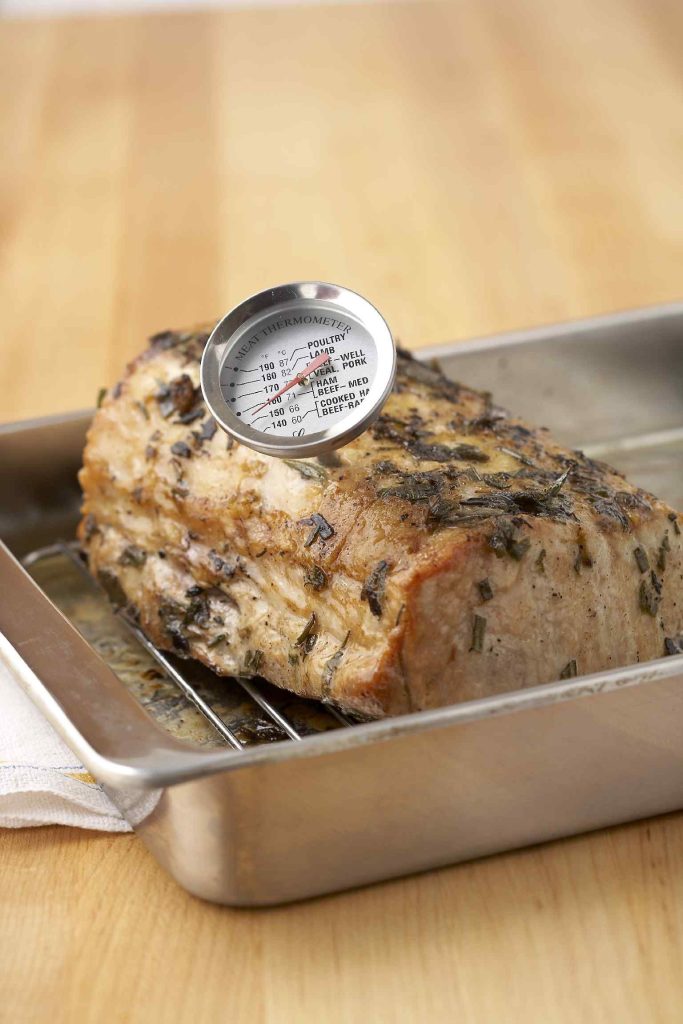If you’ve ever struggled with cooking meat to the perfect temperature, then you need to learn how to properly use a meat thermometer. This essential kitchen tool takes the guesswork out of cooking, ensuring that your meat is cooked to perfection every time. By following a few simple steps, you can unlock the potential of your meat thermometer and elevate your culinary skills to a whole new level. Say goodbye to undercooked or overcooked meat and hello to juicy, flavourful dishes that will impress both yourself and your guests.
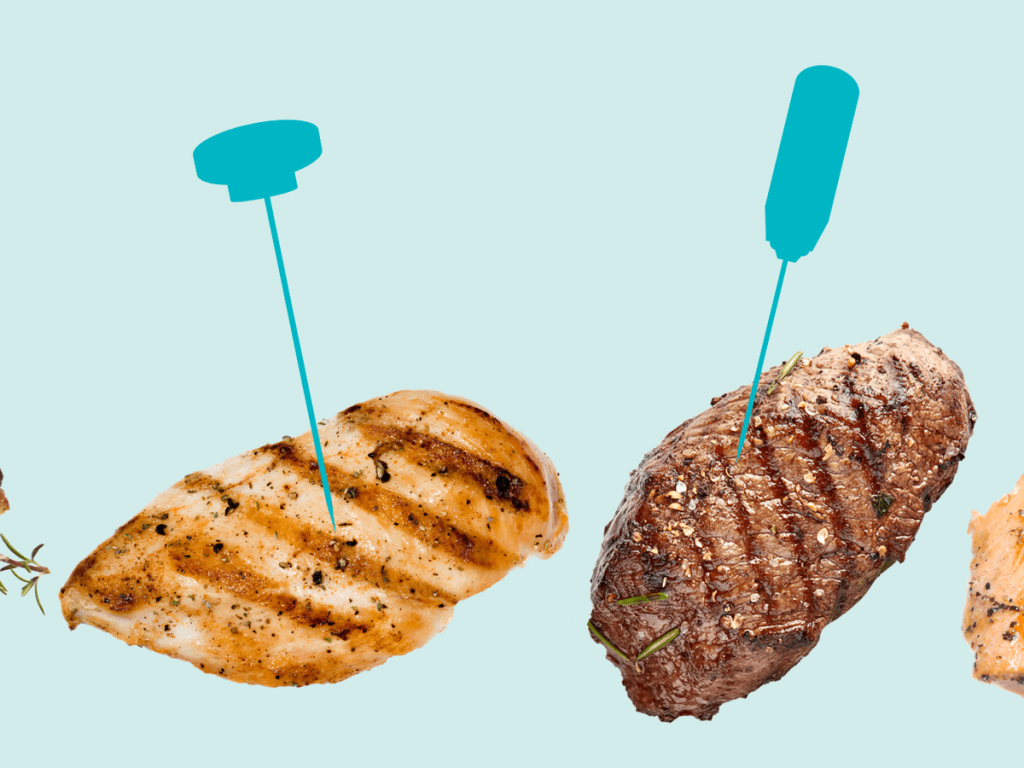
Choosing the right meat thermometer
When it comes to cooking meat, precision is key. And that’s where a meat thermometer comes in. But with so many options available, how do you choose the right one? Well, it starts with understanding the different types of meat thermometers.
Know the different types of meat thermometers
There are several types of meat thermometers, each with its own unique features. The most common types include instant-read thermometers, probe thermometers, and leave-in thermometers. Instant-read thermometers are perfect for quick temperature checks, while probe thermometers are great for monitoring the internal temperature of larger cuts of meat. Leave-in thermometers, on the other hand, can be left in the meat while it cooks, allowing you to monitor the temperature without opening the oven door. Consider your cooking needs and preferences before making a decision.
Consider the features you need in a meat thermometer
When choosing a meat thermometer, consider the features that are important to you. Some thermometers come with programmable settings, allowing you to set a desired temperature and receive an alert when it’s reached. Others may have a backlight for easy reading in low-light conditions. Consider the accuracy, durability, and ease of use of the thermometer as well. Look for a thermometer that suits your needs and budget, and you’ll be well on your way to perfectly cooked meat every time.
Calibrating your meat thermometer
Before diving into the exciting world of meat thermometers, it’s important to understand the importance of calibration.
Understand the importance of calibration
Calibration ensures that your meat thermometer is providing accurate temperature readings. Over time, thermometers can become misaligned or lose accuracy, which can lead to undercooked or overcooked meat. By calibrating your thermometer, you can ensure that it is giving you reliable readings, giving you peace of mind when cooking.
Learn how to calibrate your meat thermometer
Calibrating a meat thermometer is a simple process. Start by filling a glass with ice water and letting it sit for a few minutes to ensure it reaches a consistent temperature. Insert the probe of your thermometer into the glass, making sure it doesn’t touch the sides or bottom. The thermometer should read 32 degrees Fahrenheit (0 degrees Celsius). If it doesn’t, there may be an error in the calibration, and you should consult the manufacturer’s instructions for how to recalibrate your specific thermometer.
Inserting the meat thermometer
Now that you have a calibrated meat thermometer in hand, it’s time to learn how to properly insert it into your meat.
Identify the ideal location to insert the thermometer
When inserting a meat thermometer, it’s important to choose the right location. For large cuts of meat, such as roasts or turkeys, insert the thermometer into the thickest part of the meat, away from any bones. This will give you the most accurate reading of the internal temperature. For thinner cuts of meat, such as steaks or chicken breasts, insert the thermometer into the side of the meat, making sure it reaches the center.
Avoid touching bone or fat while inserting
When inserting the meat thermometer, be careful to avoid touching any bones or fat. These can give off a false reading and lead to inaccurate temperature readings. Aim to insert the thermometer into the muscle, as this will provide the most accurate indication of doneness.
Taking temperature readings
Knowing the desired temperature for different types of meat is crucial for achieving perfectly cooked dishes.
Know the desired temperature for different types of meat
Different types of meat have different recommended internal temperatures for safety. For example, poultry should reach an internal temperature of 165 degrees Fahrenheit (74 degrees Celsius), while medium-rare beef should be around 135 degrees Fahrenheit (57 degrees Celsius). It’s important to consult a reliable source or recipe for the specific temperature recommendations for the meat you are cooking.
Stabilize the reading before recording
When using a meat thermometer, it’s important to stabilize the reading before recording it. After inserting the thermometer into the meat, wait a few seconds to allow the temperature to settle. This will ensure that you get an accurate reading. If the temperature continues to rise after stabilizing, your meat may need more time to cook.
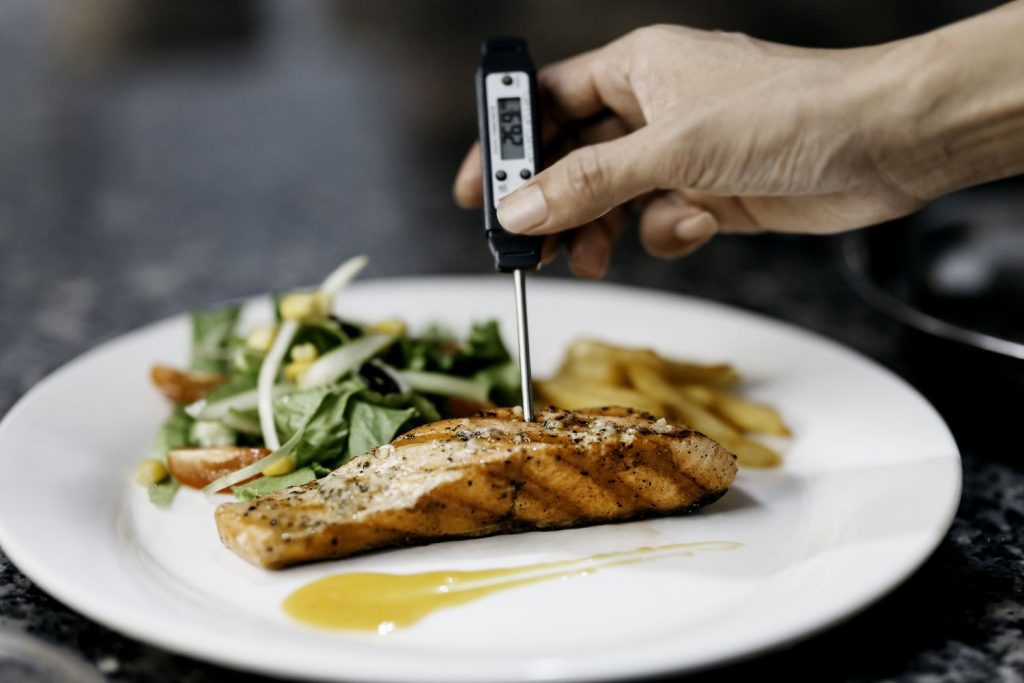
Understanding temperature zones
Understanding temperature zones in meat is essential for ensuring food safety and optimal cooking.
Recognize the different temperature zones in meat
Meat can be divided into different temperature zones based on the internal temperature. These zones include the danger zone, the rare zone, the medium-rare zone, the medium zone, and the well-done zone. The danger zone, which ranges from 40 degrees Fahrenheit (4 degrees Celsius) to 140 degrees Fahrenheit (60 degrees Celsius), is where bacteria can thrive and multiply rapidly. It’s important to avoid leaving meat in this zone for an extended period of time to prevent foodborne illnesses. The rare zone, medium-rare zone, medium zone, and well-done zone indicate the desired level of doneness for different meats.
Understand the importance of reaching the correct temperature
Reaching the correct internal temperature is crucial for both food safety and achieving the desired level of doneness. Undercooked meat can pose health risks by potentially containing harmful bacteria, while overcooked meat can become dry and tough. By understanding the temperature zones and reaching the appropriate internal temperature, you can ensure safe and delicious meals every time.
Cleaning and storing your meat thermometer
Proper cleaning and storage of your meat thermometer will ensure its longevity and reliability.
Follow proper cleaning techniques
Cleaning your meat thermometer after each use is essential for food safety and maintaining accuracy. Start by removing any residual food or residue from the probe using a clean cloth or paper towel. Avoid using abrasive cleaners or submerging the thermometer in water, as this can damage the internal components. Instead, use a mild detergent or sanitizing solution to wipe down the probe, and rinse it with warm water. Allow the thermometer to air dry before storing.
Optimal storage for longevity
To keep your meat thermometer in top condition, proper storage is key. Store your thermometer in a cool, dry place to prevent any moisture build-up or damage. Some thermometers come with protective cases or covers, which can help maintain cleanliness and protect the probe. Avoid storing your thermometer near any sharp objects or other kitchen tools that could damage it. With proper cleaning and storage, your meat thermometer will provide accurate readings for years to come.
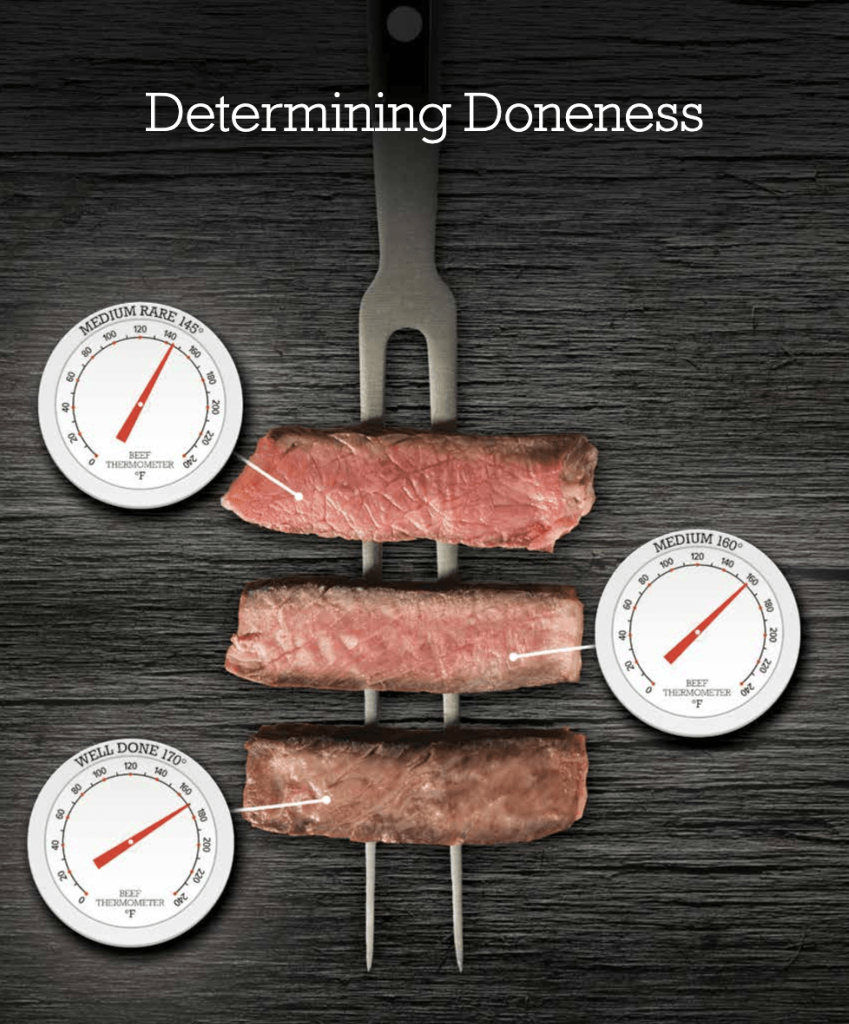
Troubleshooting common issues
Even with the best meat thermometer, issues can sometimes arise. Here are a few common problems and how to address them.
Address incorrect readings
If your meat thermometer is consistently giving incorrect readings, there may be an issue with the calibration or the thermometer itself. Start by recalibrating the thermometer using the method mentioned earlier in this article. If the problem persists, it may be time to replace the thermometer with a new one. Consult the manufacturer or seek professional advice if you’re unsure.
Resolve calibration problems
If you’re having trouble calibrating your meat thermometer, there are a few potential solutions. Make sure you’re following the calibration process correctly and double-check the instructions provided by the manufacturer. If you’re still having issues, contacting the manufacturer’s customer service can be helpful for troubleshooting. They may be able to provide further guidance or offer a replacement if necessary.
Using a meat thermometer in various cooking methods
A meat thermometer can be a versatile tool in different cooking methods, ensuring perfectly cooked meat every time.
Grilling
When grilling, a meat thermometer can help you achieve the desired level of doneness without overcooking or undercooking. Insert the thermometer into the thickest part of the meat, away from bones or fat. This will give you an accurate reading of the internal temperature and help prevent any foodborne illnesses.
Roasting
Roasting meats, such as poultry or beef, can be a delicate process. By using a meat thermometer, you can monitor the internal temperature and ensure that the meat reaches the desired doneness without drying out. Insert the thermometer into the thickest part of the meat, avoiding any bones or fatty areas.
Smoking
Smoking meats is a popular cooking method that requires precision and patience. A meat thermometer can help you gauge the internal temperature of the meat as it smokes, allowing you to achieve the perfect balance of flavour and tenderness. Insert the thermometer into the thickest part of the meat, making sure it doesn’t touch any bones.
Sous vide cooking
Sous vide cooking involves cooking vacuum-sealed food in a water bath at a precise temperature. A meat thermometer can be used to monitor the water bath temperature and ensure that the food is cooked to perfection. It can also be used to check the internal temperature of the meat before and after the sous vide process to ensure it has reached the desired level of doneness.
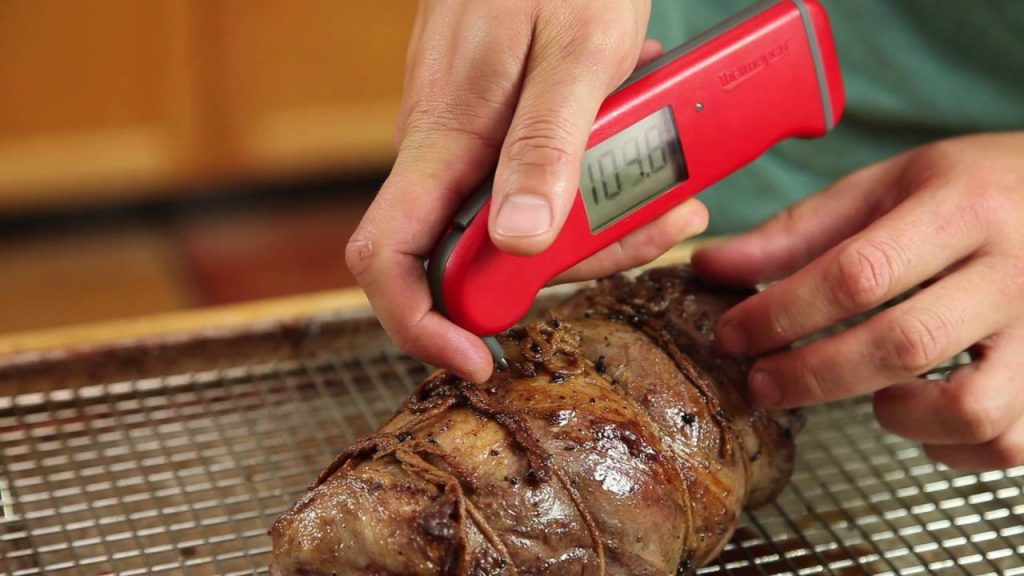
Tips for achieving accurate temperature readings
To get the most accurate temperature readings with your meat thermometer, keep these tips in mind.
Allow the meat to rest before measuring
After cooking, it’s important to let the meat rest before measuring the internal temperature. This allows the juices to redistribute and the temperature to even out, giving you a more accurate reading. Let the meat rest for at least 5 minutes before inserting the meat thermometer.
Avoid piercing with the thermometer too soon
When measuring the temperature of grilled or roasted meat, avoid piercing it with the thermometer too soon. If you insert the thermometer too early, the juices can escape, leading to dry and less flavorful meat. Wait until the meat is nearly cooked before taking a temperature reading.
Benefits of using a meat thermometer
Using a meat thermometer provides a range of benefits that can enhance your cooking experience.
Ensuring food safety
One of the primary benefits of using a meat thermometer is ensuring food safety. By accurately measuring the internal temperature of meats, you can avoid undercooking and the associated risks of foodborne illnesses. This is particularly important when cooking poultry, where achieving the recommended internal temperature is crucial for safety.
Preventing overcooking or undercooking
A meat thermometer is your best tool for preventing overcooking or undercooking meat. Whether you’re grilling, roasting, smoking, or using any other cooking method, a thermometer allows you to monitor the temperature and ensure that the meat reaches the desired level of doneness without going too far. This allows you to consistently serve perfectly cooked meats to your friends and family.
In conclusion, choosing and properly using a meat thermometer is essential for achieving delicious and safely cooked meats. By knowing the different types of meat thermometers, calibrating them, and inserting them correctly, you can get accurate temperature readings for different cooking methods. Understanding temperature zones, cleaning and storing your thermometer properly, and troubleshooting common issues will further enhance your cooking experience. So, next time you fire up the grill or turn on the oven, don’t forget to grab your trusty meat thermometer and enjoy perfectly cooked meats every time. Happy cooking!
